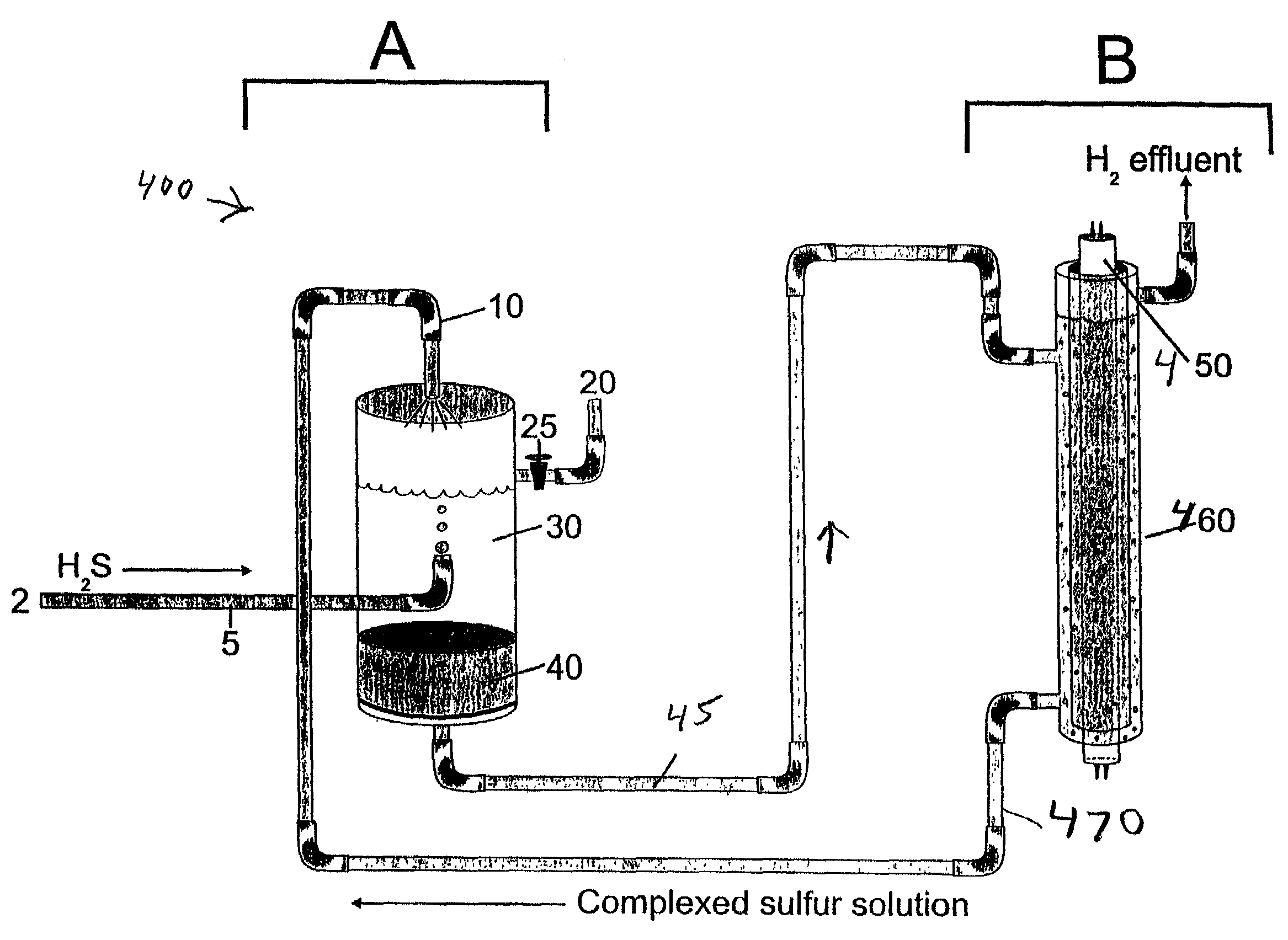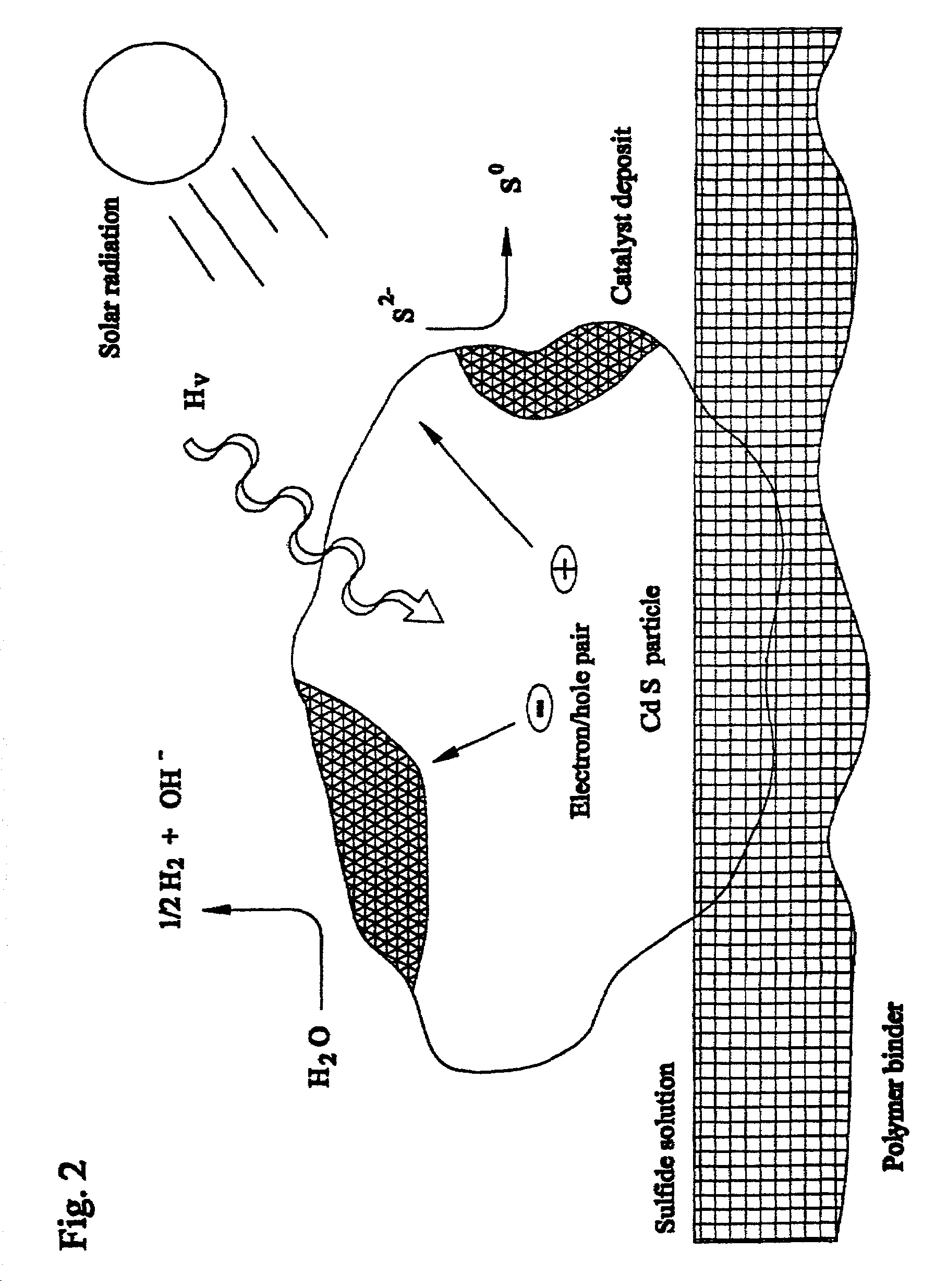UV photochemical option for closed cycle decomposition of hydrogen sulfide
a photochemical option and closed cycle technology, applied in the direction of multi-stage water/sewage treatment, separation process, nature of treatment water, etc., can solve the problems of hsub>2/sub>s gas in the refinery
- Summary
- Abstract
- Description
- Claims
- Application Information
AI Technical Summary
Benefits of technology
Problems solved by technology
Method used
Image
Examples
first preferred embodiment
[0027]FIG. 1 is a layout system 1 of a first preferred embodiment of using a photoelectrochemical particle(PEP) process for H2S decomposition for sulfur recovery. The first preferred embodiment is described in detail in reference to prior U.S. application Ser. No. 09 / 784,393 filed Feb. 15, 2001, which is a Divisional Application of Ser. No. 09 / 375,967 filed Aug. 17, 1999, now U.S. Pat. No. 6,248,218, which claims the benefit of priority of U.S. Provisional Application 60 / 126,036 filed on Mar. 25, 1999, by the same assignees, all of which are incorporated by reference.
[0028]The system 1 consists of three major units: A, the scrubber and filtration apparatus; B, an outgassing unit such as an H2S stripper, and the like; and C, the photoreactor. The scrubber used would be akin to a wet scrubber used in gas cleaning applications such as but not limited to the scrubber unit used in U.S. Pat. No. 5,211,923 to Harkness et al., which is incorporated by reference. Hydrogen sulfide H2S, coming...
second preferred embodiment
[0036]In this embodiment, the final stage of the first preferred embodiment is eliminated, so that an ultraviolet source emitting at approximately 254 nm from a low-pressure mercury lamp illuminates the alkaline sulfide solution alone with no catalyst, instead of using a photocatalyst and a reactor that is subjected to a visible wavelength lamp at approximately 450 to approximately 500 nm. Lamp can be but is not limited to cadmium line emission lamp, a super actinic mercury lamp, and the like. Unlike the first embodiment, the second embodiment is limited to using artificially created ultraviolet radiation.
[0037]Other than not being able to use sunlight, the second preferred embodiment has most of the basic advantages of the first preferred embodiment and many additional advantages. For example, avoiding the use of a photocatalyst removes the cost requirement of having a photocatalyst. Thus, the second embodiment is less expensive than the first embodiment. Additionally, the lack of ...
PUM
| Property | Measurement | Unit |
|---|---|---|
| wavelength | aaaaa | aaaaa |
| wavelength range | aaaaa | aaaaa |
| maximum wavelength range | aaaaa | aaaaa |
Abstract
Description
Claims
Application Information
 Login to View More
Login to View More - R&D
- Intellectual Property
- Life Sciences
- Materials
- Tech Scout
- Unparalleled Data Quality
- Higher Quality Content
- 60% Fewer Hallucinations
Browse by: Latest US Patents, China's latest patents, Technical Efficacy Thesaurus, Application Domain, Technology Topic, Popular Technical Reports.
© 2025 PatSnap. All rights reserved.Legal|Privacy policy|Modern Slavery Act Transparency Statement|Sitemap|About US| Contact US: help@patsnap.com



